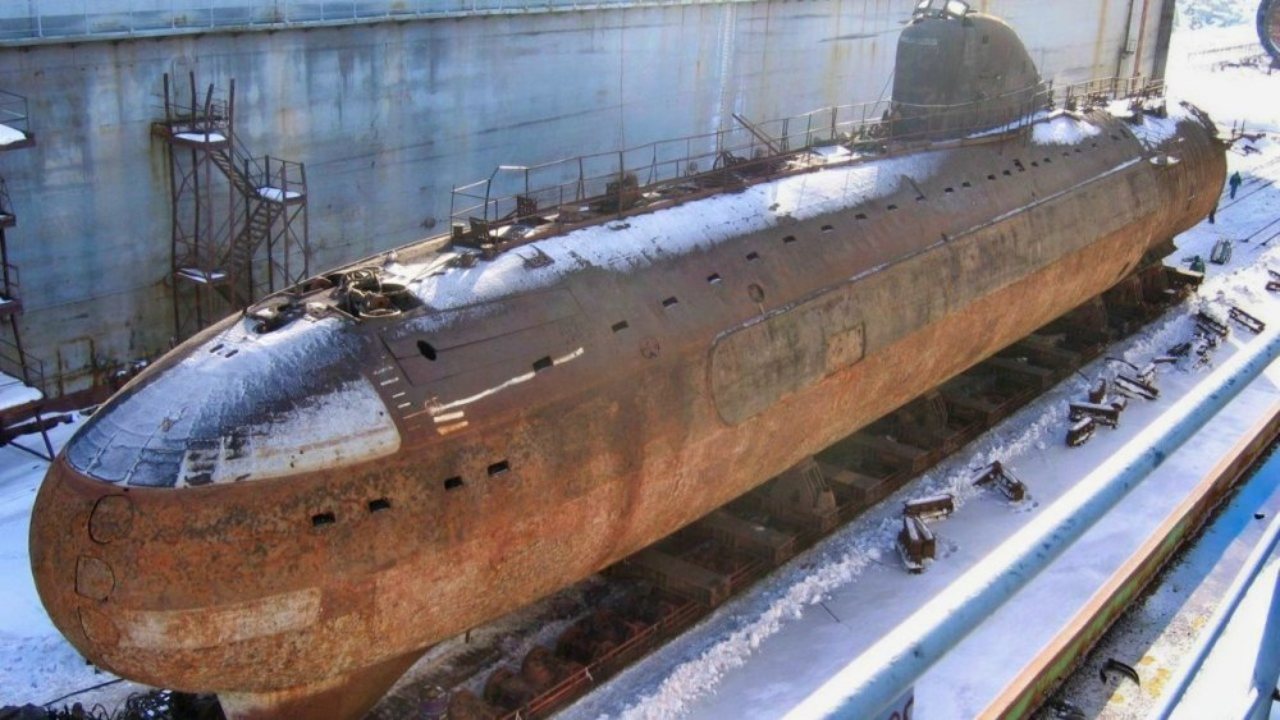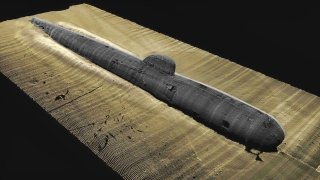A Dead Russian Nuclear Submarine Could Become an 'Environmental Nightmare'
On August 28, 2003, while being towed to the Nerpa shipyard for dismantlement, Russian nuclear submarine K-159 sank in the Barents Sea due to a combination of bad weather, aging, and poor maintenance, resulting in the deaths of nine out of ten crew members.
What You Need to Know: On August 28, 2003, while being towed to the Nerpa shipyard for dismantlement, Russian nuclear submarine K-159 sank in the Barents Sea due to a combination of bad weather, aging, and poor maintenance, resulting in the deaths of nine out of ten crew members.

-The submarine's reactor, containing spent nuclear fuel, poses an ongoing environmental threat to the sensitive Barents Sea ecosystem due to potential radioactive leakage.
K-159: The Soviet Nuclear Submarine Still Threatening the Barents Sea
Launched in 1963, the Soviet Red Navy’s K-159 was part of the Project 627 “November” (NATO designation) nuclear-powered submarines. It’s an old boat. In fact, it was the first nuclear submarine class the Soviet Navy ever procured for itself. K-159 was supposed to have been decommissioned in 1993. Following the end of the Cold War and collapse of the Soviet Union, Moscow struggled to maintain its once-mighty military.
So, rather than decommission the boat as was planned, the Russians of the post-Soviet era kept the submarine part of the fleet—keeping the boat in reserve.
Back on August 28, 2003, K-159 was being towed in the Barents Sea from the naval base at Polyarny (made famous by Tom Clancy’s The Hunt for Red October) to the Nerpa shipyard for its final dismantlement. During its journey, the submarine, which was manned by a skeleton crew of ten, got stuck in bad weather and subsequently sank.
The Sinking
The exact cause of the sinking remains unknown.
Reports, however, suggest that a combination of bad weather, the age of the submarine, and the poor maintenance over many years contributed to the loss of this submarine in the Barents Sea.
The sinking of K-159 resulted in the deaths of the skeleton crew (nine out of ten of them). What’s more, the search-and-rescue (SAR) operations were hampered by the depth that the K-159 came to a rest at (around 235 meters or 770 feet) as well as the inclement Arctic weather conditions in the Barents Sea.
The Kursk Example
This tragedy came just three years after the Kursk incident when the Russians lost an Oscar II-class submarine with all hands. That incident remains murky, as rumors have spread in the 24 years since the loss of that submarine that the Kursk was testing an experimental, rocket-propelled torpedo that misfired.
Moscow vehemently denies this.

Regardless of what happened to the Kursk in 2000, the fact remains that the loss of K-159 reinforced the belief among the Russians that their navy, like the rest of the country at that time, was in total freefall.
There was political fallout for Vladimir Putin and his regime, too.
K-159 Still Threatens the Ecological Safety of the Barents Sea
And, apparently, there is actual fallout—still—from this event in 2003. That’s because the submarine carried significant amounts of radioactive waste, including its spent nuclear fuel, when she went down in the Barents Sea. This area of the world, the Barents Sea, is designated as a sensitive ecological zone.
Therefore, the existence of unsecured radioactive materials raises concerns about leakage and its probable negative impact on the surrounding marine life, as well as the region’s food chain.
K-159 to this day threatens the ecological safety of the Barents Sea.
Author Experience and Expertise: Brandon J. Weichert
Brandon J. Weichert, a National Interest national security analyst, is a former Congressional staffer and geopolitical analyst who is a contributor at The Washington Times, the Asia Times, and The-Pipeline. He is the author of Winning Space: How America Remains a Superpower, Biohacked: China’s Race to Control Life, and The Shadow War: Iran’s Quest for Supremacy. His next book, A Disaster of Our Own Making: How the West Lost Ukraine, is due October 22 from Encounter Books. Weichert can be followed via Twitter @WeTheBrandon.
All images are Creative Commons or Shutterstock.
From the Vault


